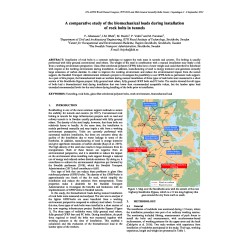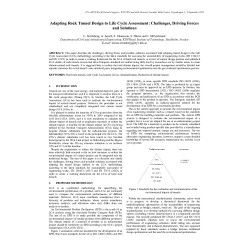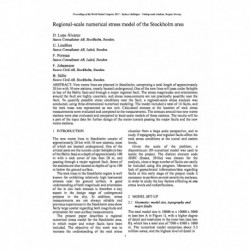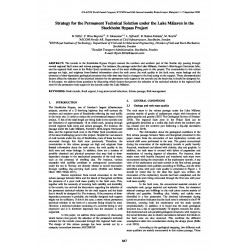No document
Search & filter
Search for a publication
Search & filter
List of products by author: F. Johansson
-
A comparative study of the biomechanical load s during installationof rock bolts in tunnels
Abstract: Installation of rock bolts is a common technique to support the rock mass in tunnels and caverns. The bolting is usually performed with fully grouted conventional steel rebars. The weight of the steel in combination with a manual installation may imply a risk from a working environment perspective. Glass fiber-reinforced polymer (GFPR) bolts have a lower weight and could therefore be beneficial...
0,00 € -
Adapting Rock Tunnel Design to Life Cycle Assessment Challenges, Driving Forces
Abstract: This paper describes the challenges, driving forces and possible solutions associated with adapting tunnel design to the Life Cycle Assessment (LCA) methodology according to the latest standards for assessing the sustainability of engineering works (EN 15643-5 and EN 17472) in order to create a working framework for the LCA of hard rock tunnels. A review of current design practice and published...
0,00 € -
Regional-scale numerical stress model of the Stockholm area
Abstract: New metro lines are planned in Stockholm, comprising a total length of approximately 20 km with 10 new stations, mostly located underground. One of the new lines will pass under Saltsjön (a bay of the Baltic Sea) and through a major regional fault. The stress magnitudes and orientations around the fault are highly uncertain, and stress measurements are not practically possible near the fault....
0,00 € -
Strategy for the permanent technical solution under the Lake Mälaren in the Stockholm Bypass Project
Abstract: The tunnels in the Stockholm Bypass Project connect the northern and southern part of this Nordic city passing through several regional fault zones and subsea passages. For instance, the passage under the Lake Mälaren, Sweden’s third-largest freshwater lake, and the regional fault zone in the Fiskar fjord constitutes one of the most challenging parts in this project. The uncertainties in this...
0,00 €




